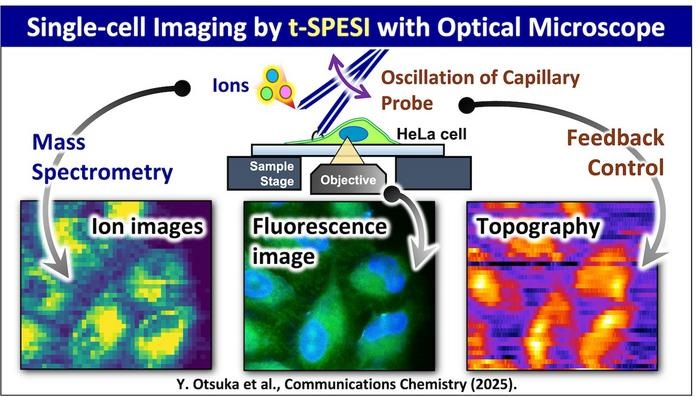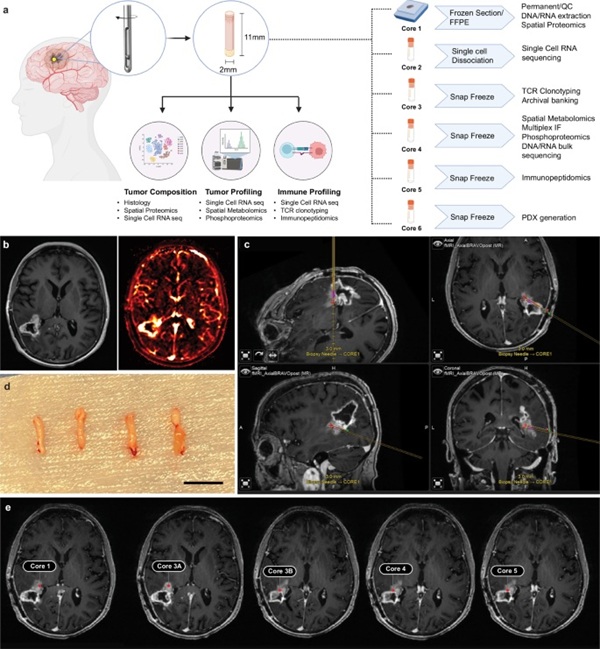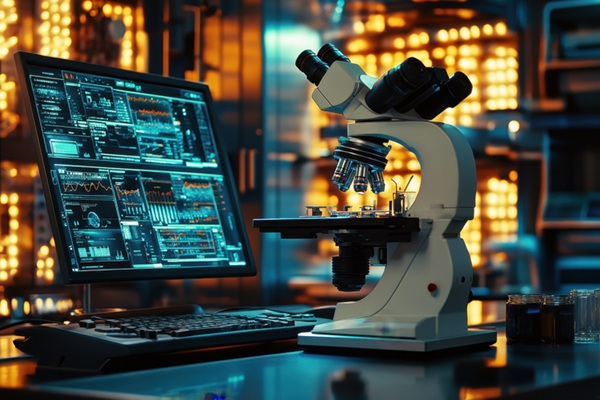New Test Predicts Risk of Preterm Birth
|
By LabMedica International staff writers Posted on 06 Jun 2018 |

Image: A pregnant woman with a stethoscope placed to her stomach. Scientists have developed a test to predict a woman\'s risk of preterm birth (Photo courtesy of University of California - San Francisco).
A test has been developed to predict a woman's risk of preterm birth when she is between 15 and 20 weeks pregnant, which may enable doctors to treat them early and prevent severe complications later in the pregnancy.
Preterm birth is the leading cause of death for children under five in the USA, and rates are increasing both in the USA, and around the world. It is often associated with inflammation and has many potential causes, including an acute infection in the mother, exposure to environmental toxins, or chronic conditions like hypertension and diabetes.
Collaborating scientists from different institutions working with the University of California - San Francisco (San Francisco, CA, USA) built a comprehensive test that would capture both spontaneous preterm births, which occurs when the amniotic sac breaks or contractions begin spontaneously, and “indicated” preterm birth, in which a physician induces labor or performs a cesarean section because the health of the mother or baby is in jeopardy. The scientists also wanted to be able to identify risk for preeclampsia, which is not included in current tests for preterm birth.
The study included 400 women with singleton deliveries in California in 2009–2010 (200 preterm births PTB and 200 full term) divided into training and testing samples at a 2:1 ratio. Sixty-three markers were tested in 15 to 20 serum samples using multiplex technology. The new test screens for 25 biomarkers of inflammation and immune system activation, as well as for levels of proteins that are important for placenta development.
Combined with information on other risk factors, such as the mother's age and income, the test can predict whether a woman is at risk for preterm birth with more than 80% accuracy. In the highest risk pregnancies, preterm births occurring before 32 weeks or in women with preeclampsia, a potentially fatal pregnancy complication marked by high blood pressure in the mother, the test predicted nearly 90% of cases.
Laura Jelliffe-Pawlowski, PhD, an associate professor of epidemiology and first author of the study, said, “There are multifactorial causes of preterm birth, and that's why we felt like we needed to build a model that took into account multiple biological pathways. The model works especially well for early preterm births and preeclampsia, which suggests that we're effectively capturing severe types of preterm birth.” The study was published on May 24, 2018, in the Journal of Perinatology.
Related Links:
University of California - San Francisco
Preterm birth is the leading cause of death for children under five in the USA, and rates are increasing both in the USA, and around the world. It is often associated with inflammation and has many potential causes, including an acute infection in the mother, exposure to environmental toxins, or chronic conditions like hypertension and diabetes.
Collaborating scientists from different institutions working with the University of California - San Francisco (San Francisco, CA, USA) built a comprehensive test that would capture both spontaneous preterm births, which occurs when the amniotic sac breaks or contractions begin spontaneously, and “indicated” preterm birth, in which a physician induces labor or performs a cesarean section because the health of the mother or baby is in jeopardy. The scientists also wanted to be able to identify risk for preeclampsia, which is not included in current tests for preterm birth.
The study included 400 women with singleton deliveries in California in 2009–2010 (200 preterm births PTB and 200 full term) divided into training and testing samples at a 2:1 ratio. Sixty-three markers were tested in 15 to 20 serum samples using multiplex technology. The new test screens for 25 biomarkers of inflammation and immune system activation, as well as for levels of proteins that are important for placenta development.
Combined with information on other risk factors, such as the mother's age and income, the test can predict whether a woman is at risk for preterm birth with more than 80% accuracy. In the highest risk pregnancies, preterm births occurring before 32 weeks or in women with preeclampsia, a potentially fatal pregnancy complication marked by high blood pressure in the mother, the test predicted nearly 90% of cases.
Laura Jelliffe-Pawlowski, PhD, an associate professor of epidemiology and first author of the study, said, “There are multifactorial causes of preterm birth, and that's why we felt like we needed to build a model that took into account multiple biological pathways. The model works especially well for early preterm births and preeclampsia, which suggests that we're effectively capturing severe types of preterm birth.” The study was published on May 24, 2018, in the Journal of Perinatology.
Related Links:
University of California - San Francisco
Latest Clinical Chem. News
- AI-Powered Blood Test Accurately Detects Ovarian Cancer
- Automated Decentralized cfDNA NGS Assay Identifies Alterations in Advanced Solid Tumors
- Mass Spectrometry Detects Bacteria Without Time-Consuming Isolation and Multiplication
- First Comprehensive Syphilis Test to Definitively Diagnose Active Infection In 10 Minutes
- Mass Spectrometry-Based Monitoring Technique to Predict and Identify Early Myeloma Relapse
- ‘Brilliantly Luminous’ Nanoscale Chemical Tool to Improve Disease Detection
- Low-Cost Portable Screening Test to Transform Kidney Disease Detection
- New Method Uses Pulsed Infrared Light to Find Cancer's 'Fingerprints' In Blood Plasma
- Carbon Nanotubes Help Build Highly Accurate Sensors for Continuous Health Monitoring
- Paper-Based Device Boosts HIV Test Accuracy from Dried Blood Samples
- AI-Powered Raman Spectroscopy Method Enables Rapid Drug Detection in Blood
- Novel LC-MS/MS Assay Detects Low Creatinine in Sweat and Saliva
- Biosensing Technology Breakthrough Paves Way for New Methods of Early Disease Detection
- New Saliva Test Rapidly Identifies Paracetamol Overdose
- POC Saliva Testing Device Predicts Heart Failure in 15 Minutes

- Screening Tool Detects Multiple Health Conditions from Single Blood Drop
Channels
Clinical Chemistry
view channel
AI-Powered Blood Test Accurately Detects Ovarian Cancer
Ovarian cancer ranks as the fifth leading cause of cancer-related deaths in women, largely due to late-stage diagnoses. Although over 90% of women exhibit symptoms in Stage I, only 20% are diagnosed in... Read more
Automated Decentralized cfDNA NGS Assay Identifies Alterations in Advanced Solid Tumors
Current circulating cell-free DNA (cfDNA) assays are typically centralized, requiring specialized handling and transportation of samples. Introducing a flexible, decentralized sequencing system at the... Read more
Mass Spectrometry Detects Bacteria Without Time-Consuming Isolation and Multiplication
Speed and accuracy are essential when diagnosing diseases. Traditionally, diagnosing bacterial infections involves the labor-intensive process of isolating pathogens and cultivating bacterial cultures,... Read more
First Comprehensive Syphilis Test to Definitively Diagnose Active Infection In 10 Minutes
In the United States, syphilis cases have surged by nearly 80% from 2018 to 2023, with 209,253 cases recorded in the most recent year of data. Syphilis, which can be transmitted sexually or from mother... Read moreMolecular Diagnostics
view channel
POC Diagnostic Platform Combines Immunoassay and Molecular Testing
An innovative diagnostic platform offers superior sensitivity across all sample types, including blood, compared to existing rapid tests, while maintaining a low-cost, user-friendly design.... Read more
Single Blood Test Could Detect Different Types of Cancer at Early Stages
Currently, reliable screening for only a few types of cancer is available, such as those affecting the breast, bowel, cervix (neck of the womb), and lung for individuals at high risk. While these screenings... Read moreHematology
view channel
First Point-of-Care Heparin Monitoring Test Provides Results in Under 15 Minutes
Heparin dosing requires careful management to avoid both bleeding and clotting complications. In high-risk situations like extracorporeal membrane oxygenation (ECMO), mortality rates can reach about 50%,... Read more
New Scoring System Predicts Risk of Developing Cancer from Common Blood Disorder
Clonal cytopenia of undetermined significance (CCUS) is a blood disorder commonly found in older adults, characterized by mutations in blood cells and a low blood count, but without any obvious cause or... Read moreMicrobiology
view channel
New Blood Test Detects Up to Five Infectious Diseases at POC
Researchers have developed a prototype flow-through assay capable of detecting up to five different infections, with results that can be quickly analyzed and transmitted via a specialized smartphone app.... Read more
Molecular Stool Test Shows Potential for Diagnosing TB in Adults with HIV
Tuberculosis (TB), caused by the bacterium Mycobacterium tuberculosis, led to 1.25 million deaths in 2023, with 13% of those occurring in people living with HIV. The current primary diagnostic method for... Read morePathology
view channel
New Technology Improves Understanding of Complex Biological Samples
Tissues are composed of a complex mixture of various cell types, which complicates our understanding of their biological roles and the study of diseases. Now, a multi-institutional team of researchers... Read more
Combining Multiple Laboratory Techniques Provides Deeper Insights into Deadly Brain Tumors
Glioblastoma (GBM) is a highly aggressive primary brain cancer that currently has limited effective treatments. Stereotactic needle biopsies are commonly employed for diagnosis; however, their use is restricted... Read more
AI-Based Diagnosis System Identifies Malaria Parasites from Blood Smear Images
Malaria diagnosis has traditionally been performed manually via microscopic examination, a process that is not only time-consuming but also highly dependent on the expertise and accuracy of healthcare providers.... Read moreTechnology
view channel
Advanced Predictive Algorithms Identify Patients Having Undiagnosed Cancer
Two newly developed advanced predictive algorithms leverage a person’s health conditions and basic blood test results to accurately predict the likelihood of having an undiagnosed cancer, including ch... Read more
Light Signature Algorithm to Enable Faster and More Precise Medical Diagnoses
Every material or molecule interacts with light in a unique way, creating a distinct pattern, much like a fingerprint. Optical spectroscopy, which involves shining a laser on a material and observing how... Read more
Disposable Microchip Technology Could Selectively Detect HIV in Whole Blood Samples
As of the end of 2023, approximately 40 million people globally were living with HIV, and around 630,000 individuals died from AIDS-related illnesses that same year. Despite a substantial decline in deaths... Read more
Pain-On-A-Chip Microfluidic Device Determines Types of Chronic Pain from Blood Samples
Chronic pain is a widespread condition that remains difficult to manage, and existing clinical methods for its treatment rely largely on self-reporting, which can be subjective and especially problematic... Read moreIndustry
view channel
Qiagen Acquires NGS Analysis Software Company Genoox
QIAGEN (Venlo, the Netherlands) has signed a definitive agreement to acquire Genoox (Tel Aviv, Israel), a provider of artificial intelligence (AI)-powered software that enables clinical labs to scale and... Read more
Cepheid and Oxford Nanopore Technologies Partner on Advancing Automated Sequencing-Based Solutions
Cepheid (Sunnyvale, CA, USA), a leading molecular diagnostics company, and Oxford Nanopore Technologies (Oxford, UK), the company behind a new generation of sequencing-based molecular analysis technologies,... Read more
Grifols and Tecan’s IBL Collaborate on Advanced Biomarker Panels
Grifols (Barcelona, Spain), one of the world’s leading producers of plasma-derived medicines and innovative diagnostic solutions, is expanding its offer in clinical diagnostics through a strategic partnership... Read more

















